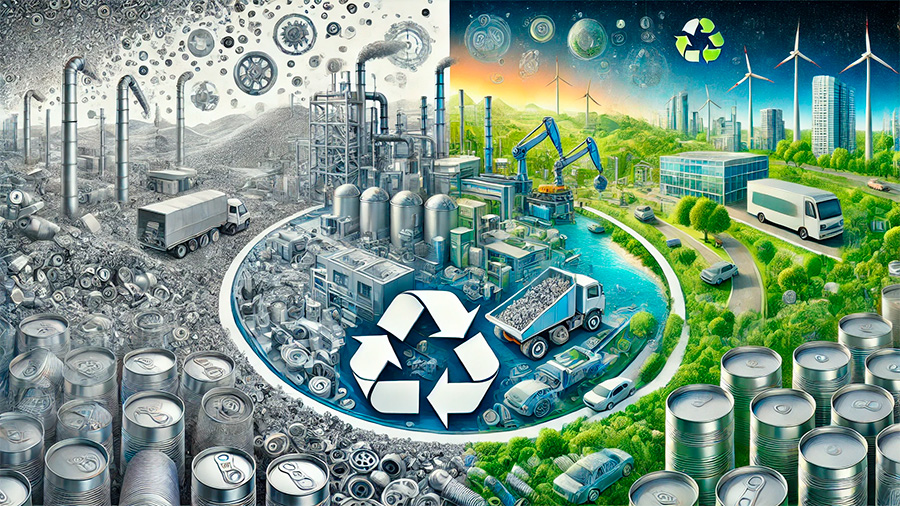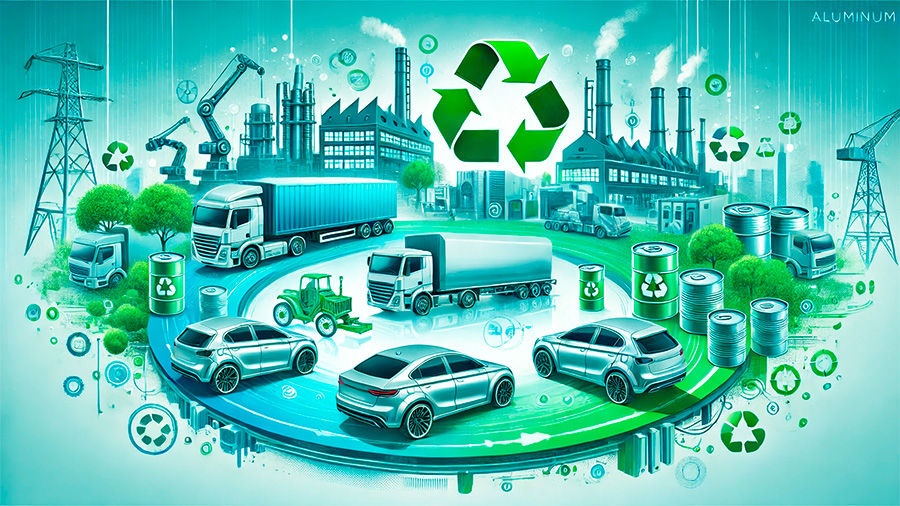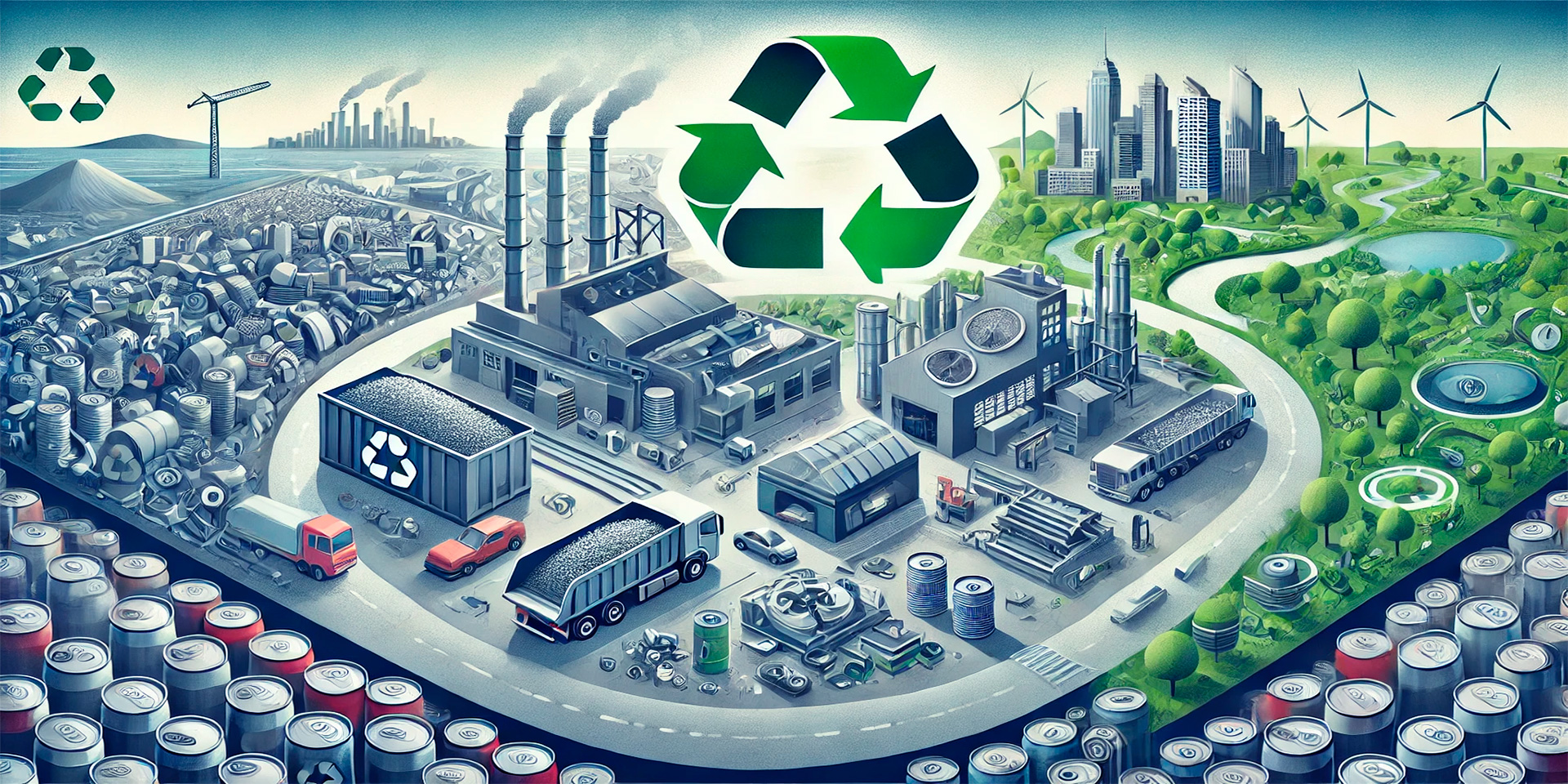In the face of growing environmental concerns, industries worldwide are increasingly embracing the principles of circular economies, aiming to minimize waste, reduce the consumption of finite resources, and encourage sustainable practices. Among the most critical materials in supporting circular economies is aluminum, a metal renowned for its recyclability and sustainability. Aluminum’s ability to be recycled indefinitely without losing its properties makes it a key player in the global recycling revolution. This article explores how aluminum supports circular economies, reduces environmental impact, and drives the transition to more sustainable industrial practices.
Understanding Circular Economies and Their Importance
A circular economy is an economic system designed to minimize waste and make the most of available resources. Unlike the traditional linear economy—where raw materials are extracted, used, and then discarded—a circular economy encourages the continuous use of resources, promoting recycling, reusing, and refurbishing products to extend their life cycle.
1. The Principles of Circular Economies
Circular economies are built on three core principles: reduce, reuse, and recycle. The goal is to create a closed-loop system in which products, materials, and resources are continuously repurposed, minimizing waste and environmental harm.
The main components of a circular economy:
- Reducing waste: By designing products and systems that minimize waste generation, industries reduce the overall environmental impact.
- Reusing products and materials: Reusing items or components in their original form or after minimal reprocessing helps conserve resources and extend the life of materials.
- Recycling: Recycling allows materials to be returned to the supply chain, reducing the need for virgin resources and decreasing waste accumulation.
2. The Role of Aluminum in Circular Economies
Aluminum’s inherent properties make it a standout material for supporting circular economy practices. As one of the most recycled materials in the world, aluminum is not only highly recyclable but also retains its quality and value throughout the recycling process. This characteristic makes it an ideal candidate for circular economic systems, where the goal is to reduce the extraction of raw materials while minimizing waste and energy consumption.
 Why Aluminum is a Key Component of Circular Economies
Why Aluminum is a Key Component of Circular Economies
Aluminum stands out as one of the most efficient materials in terms of recycling. Approximately 75% of all the aluminum ever produced is still in use today, thanks to its recyclability. This makes aluminum a crucial element in the shift towards circular economies.
1. Aluminum’s Infinite Recyclability
One of the primary advantages of aluminum is its ability to be recycled an infinite number of times without losing its quality. Unlike many other materials, such as plastic or paper, aluminum can be recycled repeatedly into new products without degradation of its properties. This makes aluminum one of the most sustainable metals in terms of resource use and waste reduction.
Benefits of aluminum’s recyclability:
- Resource conservation: Recycling aluminum saves raw materials, such as bauxite, the primary source of aluminum, thereby reducing the need for mining and preserving natural resources.
- Energy savings: Recycling aluminum requires significantly less energy compared to producing new aluminum from bauxite—up to 95% less energy, which reduces carbon emissions and environmental impact.
- Economic advantages: By recycling aluminum, companies reduce the costs associated with sourcing raw materials, while recycling aluminum provides valuable secondary resources for manufacturing.
2. Aluminum’s Role in Reducing Environmental Impact
The environmental impact of aluminum production is substantial, especially during the extraction of bauxite and its conversion into aluminum. However, by embracing aluminum recycling, companies can drastically reduce this impact. Aluminum recycling eliminates the need for large-scale mining operations, reduces energy consumption, and lowers greenhouse gas emissions, contributing to a more sustainable manufacturing process.
Environmental benefits of aluminum recycling:
- Lower carbon footprint: Recycling aluminum produces far fewer greenhouse gas emissions compared to primary aluminum production, making it a key strategy in achieving global climate goals.
- Less water usage: Aluminum recycling requires significantly less water than the mining and refining process, reducing water waste and conserving precious resources.
- Waste reduction: Recycling aluminum helps divert large amounts of material from landfills, contributing to reduced waste accumulation and promoting responsible waste management practices.

Aluminum’s Contribution to Industry Sustainability
Aluminum’s role in circular economies extends beyond its recyclability—it is also used to create products that support sustainability in other industries. From lightweight automotive components that improve fuel efficiency to packaging materials that reduce the need for new raw materials, aluminum plays a central role in advancing industrial sustainability.
1. Aluminum in the Automotive Industry
In the automotive sector, aluminum is increasingly being used to create lighter, more fuel-efficient vehicles. By using aluminum in place of heavier materials like steel, automakers can reduce the weight of their vehicles, thereby improving fuel efficiency and lowering emissions.
Aluminum’s impact on automotive sustainability:
- Lightweight vehicles: Aluminum’s lightweight nature makes it ideal for reducing the overall weight of cars, trucks, and electric vehicles (EVs), improving fuel efficiency and reducing energy consumption.
- Recyclability in manufacturing: Many automotive manufacturers use recycled aluminum, which helps them meet sustainability goals and reduce the environmental impact of production.
- Lower carbon emissions: The use of aluminum in vehicles leads to lower carbon emissions, helping manufacturers meet increasingly strict environmental regulations in the automotive industry.
2. Aluminum in Sustainable Packaging
Aluminum is widely used in packaging due to its ability to protect products from light, air, and moisture, all while being lightweight and highly durable. The use of aluminum for packaging—especially in food and beverage containers—has grown as companies and consumers increasingly demand sustainable options.
Benefits of aluminum packaging for sustainability:
- Reusability: Aluminum packaging, such as cans and foil, is easy to recycle and can be reused in new products, contributing to reduced waste and less reliance on new raw materials.
- Energy-efficient manufacturing: Recycling aluminum for packaging reduces the energy required to create new containers, making it an energy-efficient option for manufacturers and consumers alike.
- Long-lasting materials: Aluminum is durable and can protect goods for long periods, helping to reduce food waste by preserving products for longer durations.
Challenges and Opportunities in Aluminum Recycling
Despite the clear advantages of aluminum recycling, there are challenges to maximizing its potential. While aluminum recycling rates are high, further improving efficiency in the recycling process and increasing global recycling rates are key goals for industries and governments.
1. Barriers to Recycling Efficiency
One of the challenges facing aluminum recycling is contamination. When aluminum products are mixed with other materials, it can complicate the recycling process and reduce the quality of the resulting recycled material. Additionally, not all regions have the necessary infrastructure to efficiently collect and recycle aluminum.
Challenges in improving aluminum recycling:
- Contamination of recyclables: When aluminum is mixed with non-recyclable materials or other metals, it can lower the quality of recycled aluminum, making it less valuable for manufacturers.
- Recycling infrastructure: In many parts of the world, recycling systems are underdeveloped, limiting the ability to collect and process aluminum efficiently.
- Global variations in recycling rates: Different countries and regions have varying levels of recycling infrastructure, meaning that some regions are far more successful at recycling aluminum than others.
2. Expanding Aluminum Recycling Worldwide
To maximize the benefits of aluminum in a circular economy, it is essential to improve global recycling efforts. This includes enhancing recycling infrastructure, improving consumer awareness, and reducing contamination in the recycling stream. Governments, industries, and organizations must collaborate to promote aluminum recycling and encourage responsible consumption.
Strategies to improve aluminum recycling:
- Enhanced collection systems: Investing in better recycling infrastructure and increasing consumer participation can help improve the rate at which aluminum is collected and recycled.
- Public awareness campaigns: Educating the public on the importance of recycling aluminum and reducing contamination can help ensure that more aluminum is properly recycled.
- Global cooperation: Governments, industries, and international organizations must work together to establish global standards for aluminum recycling, ensuring that more aluminum is recycled efficiently worldwide.
Conclusion
Aluminum is a key driver of circular economies, offering an unparalleled level of recyclability and sustainability that reduces environmental impact and fosters a more sustainable future. By supporting recycling initiatives, improving collection systems, and leveraging aluminum’s applications in various industries, we can significantly reduce waste, conserve resources, and lower carbon emissions. With continued innovation and commitment to sustainability, aluminum will remain at the forefront of the global recycling revolution, helping create more resilient and environmentally conscious economies.
